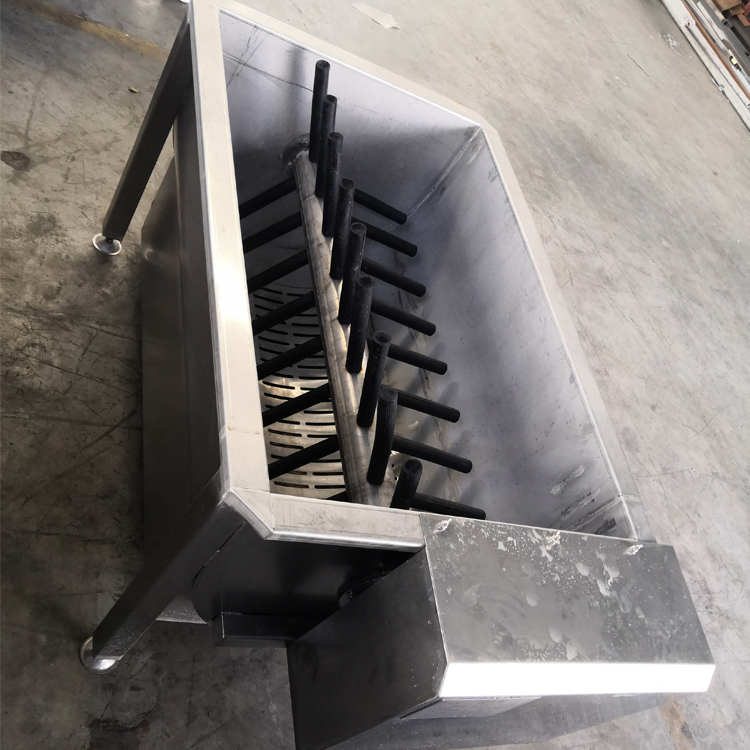vacuum blister packaging machine
Dec . 16, 2024 04:05 Back to list
vacuum blister packaging machine
Understanding Vacuum Blister Packaging Machines
In today’s rapidly evolving packaging industry, efficiency and preservation of product integrity are paramount. One of the most effective solutions for achieving these goals is the vacuum blister packaging machine. This technology has transformed the way companies package their products, ensuring longer shelf lives and enhanced visual appeal while maintaining maximum protection.
What is Vacuum Blister Packaging?
Vacuum blister packaging involves encasing a product between plastic blister and backing material, while simultaneously removing air to create a vacuum seal. This method is especially prevalent in various industries, including pharmaceuticals, food and beverages, consumer electronics, and cosmetics. The vacuum seal not only protects the contents from environmental factors like moisture and air but also enhances the presentation of the product, making it more attractive to consumers.
Key Features of Vacuum Blister Packaging Machines
1. High Efficiency Vacuum blister packaging machines are designed for high throughput, allowing manufacturers to package large quantities of products in a shorter amount of time. This efficiency translates to reduced production costs and faster time-to-market.
2. Versatility These machines can handle a wide range of products, from delicate pharmaceutical items to robust electronic components. The ability to customize the packaging process to suit various shapes, sizes, and materials makes them a valuable asset in diverse industries.
3. Reduced Waste By using precise measurements and materials, vacuum blister packaging machines minimize material waste. Additionally, creating a vacuum seal helps prolong the shelf life of products, reducing the likelihood of spoilage and returns.
4. Enhanced Preservation The vacuum sealing process effectively removes oxygen and moisture, which are primary causes of product degradation. By combining vacuum sealing with barrier films, manufacturers can further protect sensitive items from light, oxygen, and humidity.
5. Automated Processes Many modern vacuum blister packaging machines come equipped with automation features that integrate seamlessly into existing production lines. This includes automated loading and unloading systems, which enhance overall production flow and reduce labor costs.
vacuum blister packaging machine

Applications of Vacuum Blister Packaging
1. Pharmaceuticals In the pharmaceutical industry, maintaining product integrity is crucial. Vacuum blister packaging is ideal for pills and capsules, providing a sterile and secure environment that extends shelf life while also offering tamper-proof features.
2. Food Industry For the food sector, vacuum blister packaging helps in maintaining freshness and quality. This method is commonly used for snacks, prepared meals, and even fresh produce, allowing for extended refrigeration and delivery times.
3. Consumer Electronics The sensitive nature of electronic components necessitates secure packaging. Vacuum blister packaging protects these components from dust, moisture, and mechanical damage during storage and shipping.
4. Cosmetics In the cosmetics industry, product presentation is key. Vacuum blister packaging provides an appealing visual display while offering protection against contamination, thus enhancing consumer confidence.
Choosing the Right Machine
When selecting a vacuum blister packaging machine, companies should consider factors such as production volume, product type, and desired level of automation. It's also essential to evaluate the machine's compatibility with various materials and its ease of maintenance. Investing in a high-quality vacuum blister packaging machine can significantly impact a company's operational efficiency and product quality.
Conclusion
Vacuum blister packaging machines are integral to modern manufacturing processes, offering numerous advantages including efficiency, versatility, and product preservation. As industries continue to seek innovative solutions to meet consumer demands and enhance product appeal, the significance of this technology will likely grow, making it a vital consideration for any packaging strategy. As companies embrace these machines, they can ensure their products stand out while receiving the protection necessary for a competitive market.
-
Automatic Feeding Line System-Pan Feeder Nipple Drinker|Anping County Yize Metal Products Co., Ltd.
NewsJul.29,2025
-
Hot Sale 24 & 18 Door Rabbit Cages - Premium Breeding Solutions
NewsJul.25,2025
-
Automatic Feeding Line System Pan Feeder Nipple Drinker - Anping County Yize Metal Products Co., Ltd.
NewsJul.21,2025
-
Automatic Feeding Line System Pan Feeder Nipple Drinker - Anping County Yize Metal Products Co., Ltd.
NewsJul.21,2025
-
Automatic Feeding Line System - Anping Yize | Precision & Nipple
NewsJul.21,2025
-
Automatic Feeding Line System - Anping Yize | Precision & Nipple
NewsJul.21,2025






